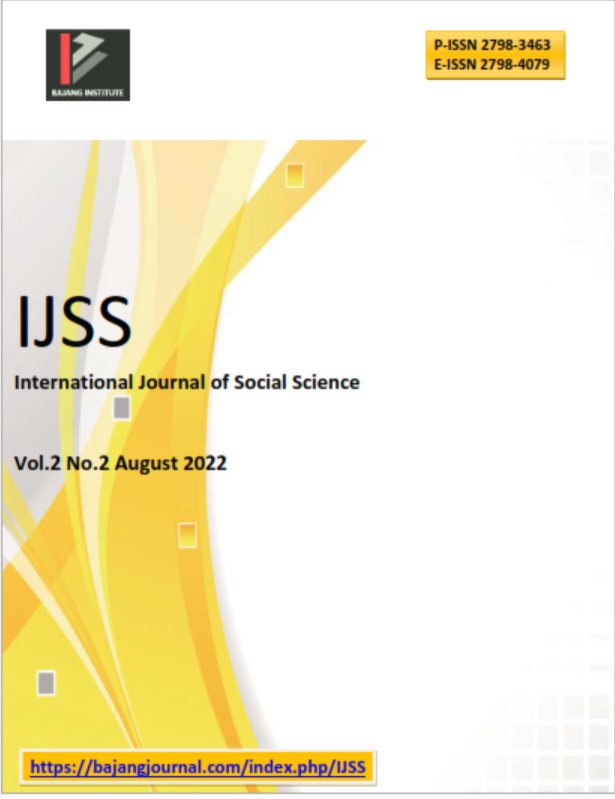SHEEP PRODUCTION DEVELOPMENT STRATEGY IN EAST BATURAJA SUB DISTRICT OKU REGENCY
DOI:
https://doi.org/10.53625/ijss.v2i2.2608Keywords:
Sheep production Development strategyAbstract
This study aims to analyze the strategy of increasing sheep production in East Baturaja Sub District, Ogan Komering Ulu Regency, South Sumatra Province. This research was conducted in Baturaja Timur District, OKU Regency at February 2022, the research method used was a survey method with a saturated random sampling method of 15 samples. The analytical tool used is a SWOT analysis, analyzing internal and external factors in the development of a sheep farming business and finding strategies that can be applied in Baturaja Timur District in particular and in OKU District in general. The results of the study indicate that strategies that can be applied to increase the production of sheep farming in Baturaja Timur District, OKU Regency include: utilizing abundant forage feed to be used as animal feed, good livestock adaptation to the environment, then easier access to transportation and processing of livestock waste into organic fertilizer. In addition, it is necessary to increase the utilization of the potential of pasture land for livestock.
References
Language Development and Cultivation Agency. (2019). Indonesia Dictionary. Library Center. Jakarta.
Central Bureau of Statistics of Ogan Komering Ulu Regency. (2020). Livestock Statistics. BPS Ogan Komering Ulu.
Bepelitbangda Ogan Komering Ulu Regency. (2020). Restra Government of Ogan Komering Ulu Regency.
Fisheries and Livestock Service Office of Ogan Komering Ulu Regency. (2021). Animal Husbandry Data for the Livestock
Sector of the Department of Fisheries and Livestock, Ogan Komering Ulu Regency.
Indiriani and Yatiworo (2015). Nutrition and Food. Main Grace of Raharja. Bandar Lampung.
Ilham N. (1995) Ruminated Livestock Development Strategy in Indonesia Viewed from the Potential of Feed and Land
Resources. FAE. Vol. 13 No. 2, 1995 : 33 – 43
Joni Ariansyah, et al. (2018). Strategy Analysis of Goat Farming Development Plan on Post-Mining Land (Case Study in Batu
Arang Lake PT. Kaltim Prima Coal East Kutai Regency).
Kotler, Philip and Kevin Lane Keller. (2011). Marketing Management, Issue 13 Volumes 1 and 2, Translation: Bob Sabran
Jakarta. Erlangga.
Lubis AR. (2009). Sheep Livestock Development Strategy Formulation in Langkat Regency. Medan
Kuncoro. (2006). Strategy How to Achieve Competitive Advantage. Erlangga. Jakarta.
Mahmudatussa'adah A. (2007) The Importance of Good and Halal Food Assurance To Increase Indonesian Local Food
Competitiveness.
Mudrajad Kuncoro. (2015). Strategy How to Achieve Competitive Advantage. Jakarta. Erlangga.
Nimran, Umar. (1997). Organizational behavior. Revised Edition. Surabaya: Citra Media.
Purnomo et al. (2017). Development Strategy for People's Beef Cattle in Wuryantoro District, Wonogiri Regency.
Rangkuti, F. (2013). SWOT Analysis: Dissecting Business Case Techniques. Jakarta: PT Gramedia Pustaka Utama.
Sholehana et al. (2012). Formulation of Sheep Production Improvement Strategy CV Mitra Tani Farm, Ciampea. Bogor
Sudarmono AS. and Sugeng YB. (2011). Sheep Breeding. Jakarta. Self-Help Spreader. Jakarta
Sugiyono. (2017). Parametric Statistics for Research. Bandung: CV ALFABETA
Suharyanto, H. (2011). Food Security. Journal of Social Humanities
Waharini FM and Purwantini AH. (2018) Model of Halal Food Industry Development in Indonesia.
Winarso, B. (2010). Prospects and Constraints of Goat and Sheep Agribusiness Development in Indonesia. Center for Socio-
Economic Analysis and Agricultural Policy. Bogor

















